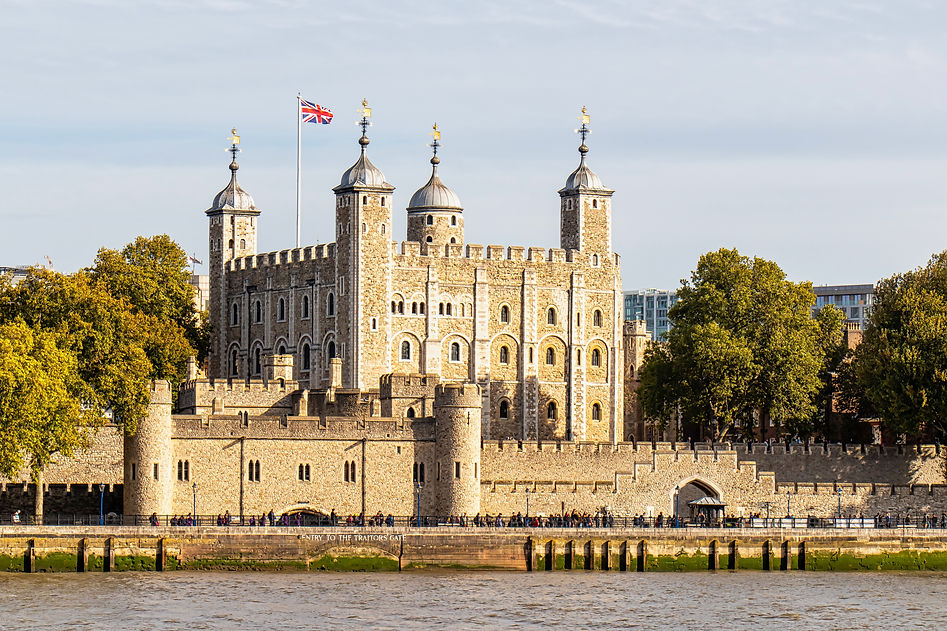
tower of london
One of the most celebrated World Heritage Sites in the United Kingdom, the Tower of London, stands as a formidable reminder of the country's vibrant past. It serves as a living testament to the historic evolution of England, capturing a millennium of rich narratives, dynamic power struggles, and momentous events that have shaped the nation's trajectory.
Presenting a unique blend of historical artifacts, interactive exhibitions, and storytelling, the Tower illuminates the grandeur of the English monarchy, the intrigue of courtly politics, and the fascinating aspects of daily life in a medieval castle. In this essay, we delve into the Tower's history, significance, and features, explore the best ways and times to visit, and uncover some intriguing facts that encapsulate its unique allure.
History of the Tower of London
The history of the Tower of London dates back to the reign of William the Conqueror. Following his victory at the Battle of Hastings in 1066, William launched a series of fortifications across England to cement his authority, and the White Tower, the centerpiece of the complex, was built in 1078. This formidable structure, which gave the entire complex its name, was designed as a demonstration of Norman power, intimidating the Londoners and deterring potential invaders.
Over the centuries, successive monarchs expanded the complex, adding a series of towers, walls, and other structures. By the late 13th century, the Tower had evolved into a grand royal palace, demonstrating the might and prosperity of the English monarchy.
However, the Tower's history is not just a tale of royal power, but also one of prison and punishment. From the 16th century onwards, the Tower was used to imprison a variety of individuals, from fallen monarchs to common criminals. The Tower is perhaps most famous as the site of high-profile executions, including those of Anne Boleyn, Catherine Howard, and Lady Jane Grey.
Significance of the Tower of London
The Tower of London holds a unique place in England's historical and cultural landscape. It symbolizes over a thousand years of English history, offering a physical representation of the country's past. From its roots as a Norman stronghold, through its evolution as a royal palace, its notorious role as a prison, and its present-day function as a museum, the Tower encapsulates the evolving narrative of the nation.
Besides, the Tower holds immense architectural significance. Its structures, particularly the White Tower, represent a milestone in the development of castle architecture in England. The Tower complex is one of the best-preserved examples of an 11th-century fortress palace, demonstrating the strength of Norman architecture.
Furthermore, the Tower of London has a unique ceremonial role as the home of the Crown Jewels. This collection, representing the royal authority, includes the Sovereign's Sceptre, the Imperial State Crown, and the St. Edward's Crown.
Exploring the Tower of London
The Tower of London offers a wealth of exhibits and attractions that illuminate various aspects of England's history. The White Tower, the original structure erected by William the Conqueror, houses the Royal Armories collection, including arms and armors of past kings and knights.
The Jewel House is another must-visit site, displaying the Crown Jewels. These symbolic artifacts, still used in royal ceremonies, represent the pomp and power of the English monarchy.
The Medieval Palace, including St Thomas's Tower, Wakefield Tower, and the Lanthorn Tower, allows visitors to experience the royal accommodations of medieval kings and queens. The Tower Green and the Scaffold Site are significant for their chilling history as execution sites.
The Bloody Tower, despite its grim name, is intriguing for its history of high-profile prisoners, including Sir Walter Raleigh. It houses an exhibition on Raleigh's imprisonment, featuring a recreation of his study.
Visiting the Tower of London
The Tower of London is open to visitors throughout the year, with its busiest period being the summer months. Spring and autumn visits provide a balance of pleasant weather and fewer crowds. Winter visits, despite the chill, can be rewarding as the Tower often hosts special festive events.
The Tower is accessible via public transport. The nearest underground station is Tower Hill on the Circle and District lines, and the closest train station is London Bridge. The River Bus service also stops at Tower Pier.
Tickets can be purchased online or at the entrance. It's recommended to allow at least three hours for a comprehensive visit. Guided tours, provided by the Yeoman Warders or 'Beefeaters', are included with the admission and offer a compelling narrative of the Tower's history.
Interesting Facts about the Tower of London
Royal Menagerie
For over 600 years, the Tower was home to a royal menagerie, hosting an array of exotic animals from lions and polar bears to elephants and kangaroos.
Resident Ravens
Legend has it that if the six resident ravens ever leave the Tower, the kingdom will fall. To prevent this, seven ravens (six and a spare) are kept at the Tower at all times.
Ghost Stories
The Tower is reputed to be one of the most haunted places in the UK. Ghosts of Anne Boleyn, Lady Jane Grey, and others have reportedly been sighted.
World War II Role
During World War II, the Tower was used as a prison for captured enemy officers and even housed the Crown Jewels in a secret location.
Theft Attempt
The Crown Jewels were nearly stolen in 1671 by Thomas Blood. Although he was caught, King Charles II pardoned him, allegedly amused by his audacity.
The Tower of London offers a captivating blend of history, culture, and intrigue, promising a rich and enlightening experience for its visitors. From its imposing architecture to its fascinating exhibits and tales of the past, the Tower's appeal lies in its ability to transport visitors back through the centuries. It stands as a testament to the nation's past and continues to play a significant role in the nation's present, making it an integral part of England's cultural heritage.



